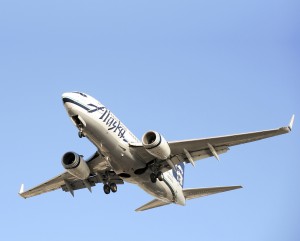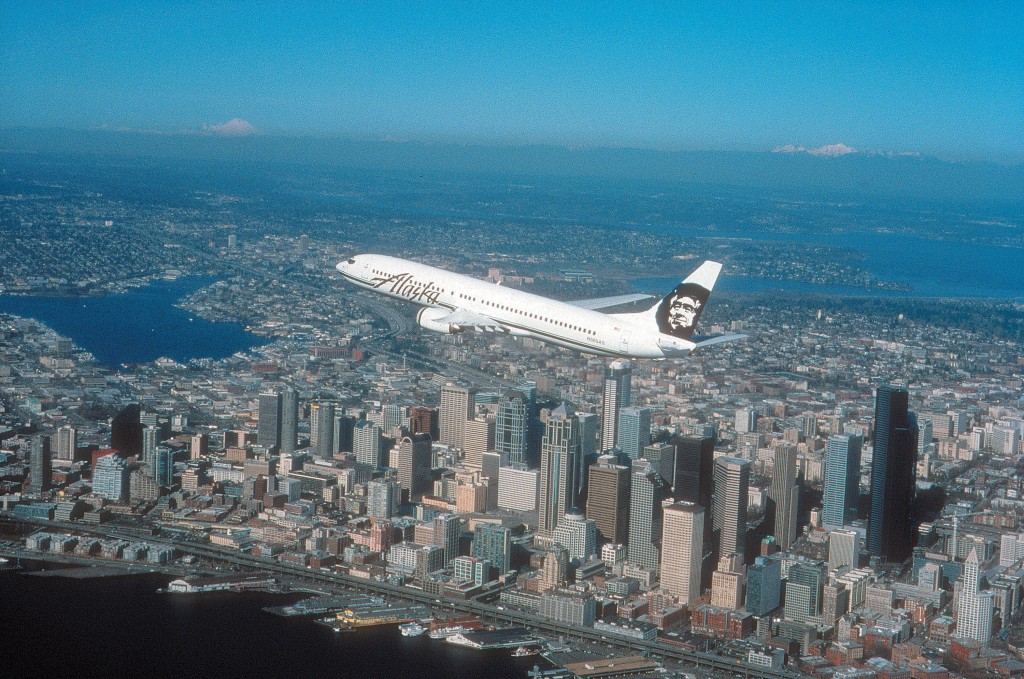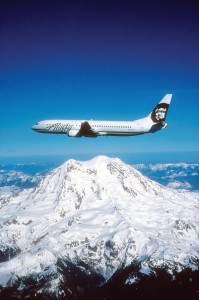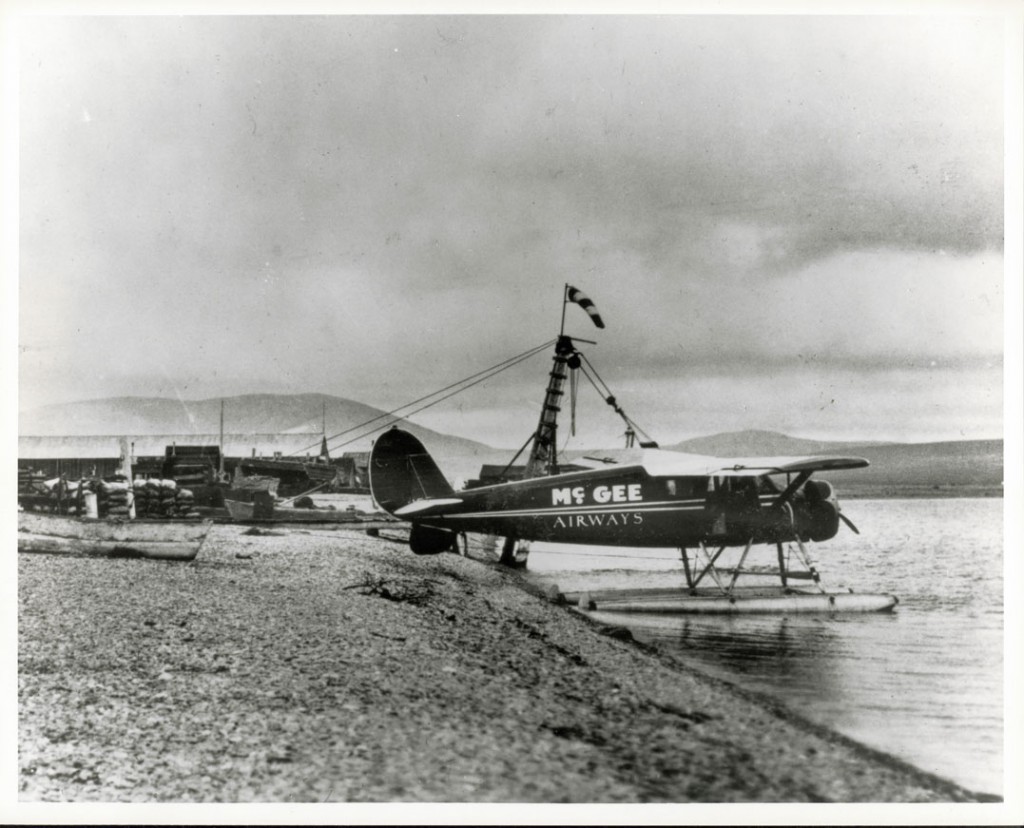True North
Keeping the customer as its lodestar, Alaska Air Group navigated a turbulent decade to emerge as one of the marquee companies in the Pacific Northwest
 Alaska Air Group recently moved into to the Fortune 500, that ultimate collection of the nation’s elite businesses, that manifest marker of size and success.
Alaska Air Group recently moved into to the Fortune 500, that ultimate collection of the nation’s elite businesses, that manifest marker of size and success.
It was no small feat for a comparatively small, independent carrier to join the big boys in an industry marked by brutal competition, rampant consolidation, and chronic crisis. And it was even more remarkable that Alaska sustained its growth through a decade of Herculean trials.
So you might expect this momentous milestone would call for some serious celebration at the company’s south Seattle headquarters. Some bottles of champagne, perhaps. A press release, at least. Did they even pause to savor the achievement?
“We celebrate a lot of things,” says Brad Tilden (EMBA 1997), the chairman and CEO of Alaska Air Group. “But we didn’t really celebrate joining the Fortune 500.”
The understatement adds up when you consider it comes from a man possessed of a pilot’s cool and an accountant’s good sense leading a company with roots in the Last Frontier.
“It’s like compound interest,” Tilden adds. “Somebody had a really good idea 82 years ago, and we’ve been working at it year after year.”
Alaskan roots, American dream
That somebody was Linious McGee, who began flying passengers and cargo in his three-seat Stinson between Anchorage and Bristol Bay back in 1932. A merger, two years later, with Star Air Service created Alaska’s largest airline, eventually renamed after the state.
At the industry’s deregulation in 1978, Alaska was the 24th largest airline in the US. And it was just beginning expansion into the Lower 48. By the end of the 1980s, Alaska Air Group had added regional carriers Horizon Air and Jet America. It had enjoyed nearly two decades of profitability and sustained growth. And it had earned a reputation for superior customer service.
Economic prosperity and low fuel costs kept Alaska growing through the 1990s.
But Tilden, who joined the company from Price Waterhouse in 1991, says that Alaska Airlines was growing almost despite itself. Friendly service masked a declining efficiency of operations. Complacency had crept in, a culture of good enough, not great.
As the century turned, Alaska’s internal vulnerabilities were about to be mortally tested.
Turbulence
The century’s first decade began in tragedy. The January 2000 crash of Alaska Airlines flight 261—half of its 88 victims being employees, family members or friends—sent the tight-knit company into mourning.
It was only the first of a litany of trials to challenge both airline and industry. Shortly after the dot-com bubble burst in 2001, the attacks of 9/11 altered air travel forever. The SARS scare of 2003 followed. Then oil prices spiked just as the financial crisis shook the foundations of the global economy.
Amid the external pressures, Alaska Airlines faced a litany of contentious labor contract negotiations beginning in 2003. Strained morale brought a dip in performance. There were simply too many late flights and mishandled bags.
“Alaska was burning through the goodwill it had earned over many decades,” says Bruce Avolio, director of the Center for Leadership and Strategic Thinking at the University of Washington Foster School of Business.
A new case study by Avolio, Chelley Paterson and Bradford Baker chronicles Alaska’s decade of dilemma. Survival would require absolute transformation—modernizing operations and slashing costs—without sacrificing the legendary customer service experience that had made Alaska Alaska.
“There was an increasing recognition among the leadership,” says Avolio, “that the course they were on could not continue.”
Crossing the Rubicon
The situation demanded decisive action. And fortunately, Bill Ayer (MBA 1978) had risen up the ranks to become CEO in 2002.
“At a time when this business required a person of tremendous courage,” says Tilden, “Bill was the perfect leader.”
Ayer never wavered from hard—and sometimes heartbreaking—decisions. The first set the tone for the company’s transformation. Amid an epidemic of default that swept the major carriers, Ayer declared that Alaska would not seek bankruptcy protection.
“We figured out what our costs needed to be for us to be viable and said to ourselves that we simply have to get there,” recalls Tilden, then CFO.
Among the difficult moves to ensure the company’s survival were a painful round of layoffs, the outsourcing of some ground operations, and some pragmatic dealing for concessions from the unions.
“The choice to stay out of bankruptcy helped the company downstream,” Avolio says. “By not destroying people’s pensions and protecting this covenant with their employees, Alaska’s management salvaged a degree of trust.”
That trust would prove vital.
Fix Seattle, then the company
 If cost cutting took toughness, improving performance took smarts. There was a lot to fix, but Ayer and Tilden chose, wisely, to first fix Seattle, Alaska’s largest hub.
If cost cutting took toughness, improving performance took smarts. There was a lot to fix, but Ayer and Tilden chose, wisely, to first fix Seattle, Alaska’s largest hub.
“We identified the basic things we needed to improve upon to be successful—safe operations, on-time performance, low fares and great customer service,” says Tilden. “And we focused relentlessly on them.”
Applying lean methodology and measuring every task, performance began improving immediately, first in Seattle and then throughout the network.
“Once they fixed Seattle, Alaska demonstrated what can be accomplished in its other cities,” says Avolio.
The dramatic transformation has been widely confirmed. Alaska has been rated highest in customer satisfaction (among traditional network carriers) by J.D. Power seven years in a row. It’s been number one in on-time performance four years running according to FlightStats.com. Outside dubbed Alaska its “Best Airline” in 2014.
Alaska has earned highest marks in just about every category awarded: air cargo handling, delivery and logistics, technology, maintenance, sustainability, philanthropy, loyalty program, employee satisfaction—even friendliness to pets.
And aggressive expansion to the East Coast, Midwest and Hawaii when others retreated has made Alaska one of the fastest growing companies in the industry.
The importance of being Alaska
That growth has lifted Alaska into the Fortune 500. The company may barely have noted the milestone. But Seattle should.
Alaska’s ascendancy adds another industry leader to the region’s increasingly diversified economy, according to Suresh Kotha, the Olesen/Battelle Excellence Chair in Entrepreneurship at the Foster School.
“Having another service-based company like Alaska become a dominant player in its industry creates jobs, broadens our economy and buffers us against the kind of cyclical downturns we used to face.”
He’s referring to the not-so-distant past when a slowdown at Boeing threatened to shut down the city. But today Seattle enjoys a far healthier balance of manufacturing, service and retail. The region is home to nine of the Fortune 500 plus other powers in a wide array of industries including aerospace (Boeing’s continued strong presence, plus a galaxy of suppliers), software (Microsoft, RealNetworks), retail (Amazon, Starbucks, Costco, Nordstrom, REI, Eddie Bauer), truck manufacturing (PACCAR), trade (Expeditors International), forestry products (Weyerhaeuser), and clusters in telecommunications, biosciences and gaming.
A successful airline adds to the economic diversity. “It’s making Seattle one of the nation’s best places to do business,” Kotha says.
Avolio adds that other companies could learn a great deal from Alaska’s customer focus and level-headed navigation of crisis “with discipline and focus.”
The other lesson of Alaska, he says, “is that the essence of great leadership is building a sense of ownership in employees and customers.”
People power
Ayer asked a lot of Alaska Air Group’s employees to save the company in its darkest hour. And those employees stepped up.
“We are the only legacy airline not to have filed for bankruptcy, thanks to the determination of our people,” he says. “What we learned by doing the hard work ourselves bodes well for our future.”
In 2012 Ayer passed the controls to Tilden, a new kind of leader for a new chapter in Alaska’s story. His focus today is on fine tuning the customer experience.
Tilden is continuing to foster Alaska’s celebrated culture of innovation that delivered the industry’s first online ticket sales and check-in kiosks, and is now developing apps to remove the anxiety from travel. “The goal today is to be the easiest airline in the world to fly by 2017,” he says.
Of course, technology can only do so much. People make the difference. While continuing to cultivate top management prospects in the Foster Executive MBA Program (see sidebar), he’s really trying to push the airline’s leadership to the front lines.
“The big opportunities going forward will come from consistent execution and delivery of service across every airport and every employee,” says Tilden.
To that end, he has initiated two company-wide programs to engage every employee and empower them to lead. It helps that they have a vested interest. As the profit-sharing program that Ayer and Tilden started during the lean days of the mid-2000s begins to pay handsomely, the link between airline performance and personal prosperity is easy to follow. That’s good for everyone’s bottom line.
“If the employees want us to be a great airline, we’ll be a great airline,” Tilden says.
Further frontiers
 The airline industry seems to have stabilized, and Alaska is all systems go, elevating both its standards and goals. An exemplar of corporate responsibility, it’s also a pillar of philanthropy in the larger community—and especially at the University of Washington.
The airline industry seems to have stabilized, and Alaska is all systems go, elevating both its standards and goals. An exemplar of corporate responsibility, it’s also a pillar of philanthropy in the larger community—and especially at the University of Washington.
“There is a really special culture at Alaska,” Tilden says. “A real sense of mission, that what we do for the communities we serve—the infrastructure we provide businesses, the connections we provide families—is important.”
“What makes me proudest is the company’s outstanding performance since I retired,” says Ayer. “The team is executing better than ever and, as always, there’s no shortage of challenges. The reality is that there are a lot of factors that are not controllable, so those that are must be very well managed.”
Tilden is ever vigilant. Or, as they like to say in Alaska’s HQ, “Brad’s never happy.”
He’s seen the perils of complacency, especially when most of the challenges ahead are yet unseen.
“In some ways, the challenge was simpler ten years ago,” notes Avolio. “You knew all of the things that were broken; you just had to fix them. Today, you don’t know where the market is going. There are a lot of question marks.”
One certainty is that fierce competition will come from smaller airlines and the big ones (which keep getting bigger through consolidation). Most immediately, Delta is making a significant incursion on Alaska’s prime West Coast territory.
But Tilden believes that Alaska Air Group has found the secret. And it’s not at all sexy. “What’s going to help us succeed over the long run is continuing to do the basics well,” he says. “We need to be safe. We need to be on-time. We need to offer low fares. We need to provide great service. Those things are 100 percent in our control. And I think if we get them right, we’re going to win.”
Additional reading:
Alaska Air Group has long leveraged the Foster Executive MBA Program as a de facto training academy for future leaders, beginning with current CEO Brad Tilden (EMBA 1997). Learn more about the special relationship between Foster’s EMBA program and the Alaska Air group.

